|
Latest Updates
September 2021
Kai designs new logo and website for Pocklington District Heritage Trust
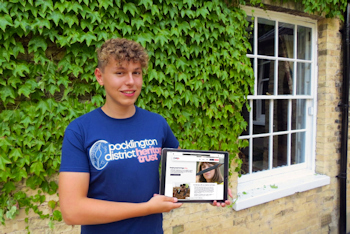 Pocklington School student Kai Swanborough has recently completed the design of a logo, website and branding for the recently established Pocklington District Heritage Trust (PDHT). The logo is based on the bronze Iron Age shield, found in Pocklington in 2018, and hailed as the most important British Celtic art object of the millennium. Pocklington School student Kai Swanborough has recently completed the design of a logo, website and branding for the recently established Pocklington District Heritage Trust (PDHT). The logo is based on the bronze Iron Age shield, found in Pocklington in 2018, and hailed as the most important British Celtic art object of the millennium.
Kai took inspiration from the shape and decoration on the shield and incorporated it into a distinctive and striking design for PDHT. Kai has also designed and built a website for the Trust, which was launched at the end of July.
Pocklington District Heritage Trust was formed to promote and showcase heritage in the town of Pocklington and nearby villages, and is made up of representatives of local organisations, archaeologists and interested and expert individuals. Pocklington is known as the 'Gateway to the Wolds' and as such is a perfect place to create a heritage centre and museum to house the exciting finds discovered in the town and surrounding district.
The Trust will be making a presentation to Kai to say thank you for all his work on the project. Kai has recently completed his GCSEs and will join Pocklington School’s Sixth Form this September to study A Levels in Computer Science, Art, Product Design and Economics. He then plans to take a multi-disciplinary degree in the USA covering subjects including design, computer science and business. Kai, from Pocklington, already has considerable experience in computer design, completing his first project in his early days at school, aged 12, and going on to undertake a number of freelance commissions. More examples of his work can be found on www.kaiswanborough.com
Phil Gilbank, chairman of Pocklington District Heritage Trust said: “The discoveries at Pocklington in recent years are of international importance and are rewriting our prehistoric history. What makes the district special is the outstanding local landscape, plus evidence and artefacts of six thousand years of continuous human occupation in and around Pocklington. We face a big challenge but are committed to creating a heritage facility that tells the story of the district’s past and keeps the recent finds where they were discovered. Kai’s great work will really help us promote the Trust’s message, and the website will be key in informing and updating the public. I hope everyone will log on https://pocklingtondistrictheritagetrust.org/ to learn more about us and see how they can support the project.”
Sheena McNamee, External Relations Director, Pocklington School, and a PDHT trustee, said: “Supporting and being actively involved in projects in our local community is an important part of our School ethos, for both staff and pupils. Having the opportunity to design a logo and a website for PDHT has been a great experience for Kai and PDHT now have a strong brand image to convey the importance of the project on a national scale.”
July 2021
Launch of the new Pocklington District Heritage Trust website: https://pocklingtondistrictheritagetrust.org/
December 2020
York Press announcement of the new Pocklington District Heritage Trust
November 2020
Pocklington District Heritage Trust is now an official UK Charity (More news to follow).
We also have a Facebook page for interaction.
August 2020
The following report was from the Pocklington Post newspaper for 6th August 2020.
York Archaeological Trust conservation project to protect important Pocklington Iron Age burial objects now complete
The delicate conservation process of the rare Iron Age chariot burial objects found in Pocklington is now complete.
The York Archaeological Trust (YAT) has been working on the chariot and other grave goods discovered on the Persimmon Homes development. Excavations at the site by MAP Archaeological Practice in Malton had already unearthed dozens of graves, but once the importance of the barrow and its contents were realised, Mags Felter of the conservation laboratories at YAT, was called in to help the excavation team undertake the task of uncovering and consolidating the important Iron Age items. The Pocklington site contained the remains of a high-status individual, together with several different grave goods including an impressive shield.
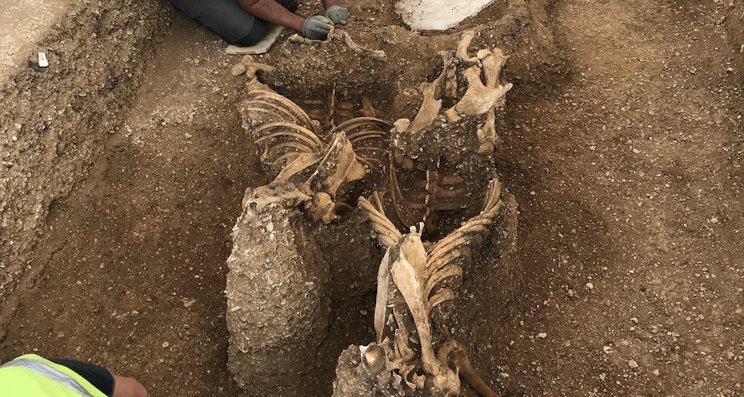
Two upright horses were also interred. Paula Ware, managing director of MAP Ltd, said: “The upright horses were positioned in motion, as though leaping upwards out of the grave. “The skeleton of the ‘warrior’ man was placed in a crouched position in the bed of the chariot with a remarkably well-preserved bronze shield, and a beautiful decorated enamelled brooch.” The corroded and fragile nature of the items meant that field conservation techniques such as the use of plaster bandages and block lifting, as well as very careful handling, were employed to lift the objects safely and transfer them to the conservation laboratory for further work. During the investigative conservation work to reveal the upper surface of the shield, which had been face-down in the ground, Mags also discovered an oval perforation which was made from a sword or a spear. This suggests the shield had either been used for defence or that it had been ritually marked for burial. Work is now being completed to draw the shield, which is being done by YAT’s Steve Allen and 3D recording, undertaken by Marcus Abbott of the Jessop Consultancy. Mags said: “I feel so lucky to have been part of such an amazing project. “Turning the shield over and seeing the upper surface for the first time since it was put into the ground was a real ‘wow’ moment. “It has been especially satisfying seeing the conservation process all the way through from excavation to publication.”
April 2020
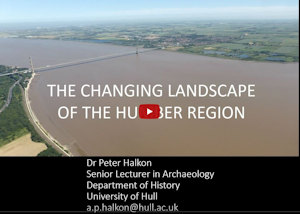 An interesting recent lecture
has appeared on YouTube given by Dr Peter Halkon, the recognised authority on the early East Riding of Yorkshire. An interesting recent lecture
has appeared on YouTube given by Dr Peter Halkon, the recognised authority on the early East Riding of Yorkshire.
Dr Peter Halkon talks about the changing landscape of the Humber from an archaeological perspective. The talk details the how the Foulness river valley once supported life on the eastern slopes of the Yorkshire Wolds through the palaeolithic, mesolithic, neolithic eras, into the bronze and iron ages and the importance of the estuary as a trade route for the Roman settlements in the region. The talk was recorded at the March 2020 meeting of the Humber Nature Forum, an event with themed talks on the environmental features of the Humber Estuary. For more information on past and future events, and to download the slides from the talk, visit www.humbernature.co.uk
Peter mentions Pocklington and the proposed new Museum at Burnby Hall in Pocklington at 21 minutes and 45 seconds if you wished to hear what he says.
Click this link to view
February 2020 - A new book, ‘The Arras Culture of Eastern Yorkshire – Celebrating the Iron Age’
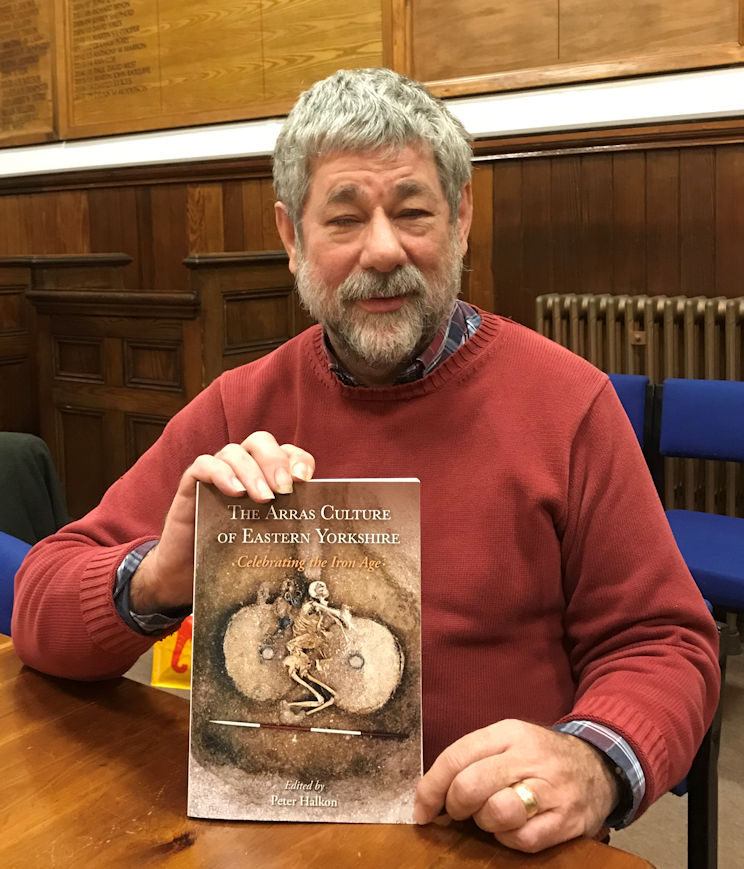
A new book, ‘The Arras Culture of Eastern Yorkshire – Celebrating the Iron Age’, has been published with local expert, Peter Halkon. as its editor.
In 2017 the Royal Archaeological Institute hosted its annual conference at York entitled ‘Arras 200’ which celebrated the 200th anniversary of East Yorkshire first major Iron Age dug at Arras Farm, near Market Weighton; and the new book brings together the papers delivered at the conference by a variety of Iron Age experts.
The 19th century excavations at Arras produced a series of spectacular finds, and gave its name to the unique Iron Age culture in East Yorkshire focused on chariot and square barrow burials. And in 1817 local antiquarians unearthed Arras’ most remarkable discoveries – the King’s Barrow, containing a chariot and two horses, and Queen’s Barrow, with another chariot and rare grave goods.
The ‘Arras 200’ conference was already organised when the anniversary of the 1817 Arras chariot find was enhanced by a notable coincidence when another chariot was uncovered in 2017 at Burnby Lane, Pocklington. Fewer than 30 Iron Age chariot burials have been excavated in Britain, and the one at Pocklington was the first with its horses attached since the King’s Barrow find 200 years earlier.
Peter Halkon, an East Riding farmer’s son who grew up in Holme-on-Spalding Moor and Nunburnholme, is the senior lecturer in archaeology at Hull University who has also spent decades undertaking archaeological excavations around the county and has published numerous books and articles about their findings.
And he has written the book’s introductory chapter setting the context of Iron Age east Yorkshire. It also contains a chapter by the Burnby Lane archaeologists, Mark Stephens and Paula Ware, describing the technical detail of their excavation; and has contributions reporting earlier digs at Wetwang and Garton, explaining aspects of Iron Age life and culture, and how to build a modern replica of the chariots of over 2,000 years ago.
‘The Arras Culture of Eastern Yorkshire – Celebrating the Iron Age’ is published by Oxbow Books of Oxford and Philadelphia, price £38.
December 2019 - "the most important British Celtic art object of the millennium"
(Press Release: Issued by 8848 Agency for Persimmon Homes Yorkshire.)
An Iron Age shield discovered in Pocklington has been hailed ‘the most important British Celtic art object of the millennium’. The shield was part of an impressive ‘warrior grave’ find uncovered at a Persimmon Homes development in 2018 and its recent preservation has revealed its full glory.
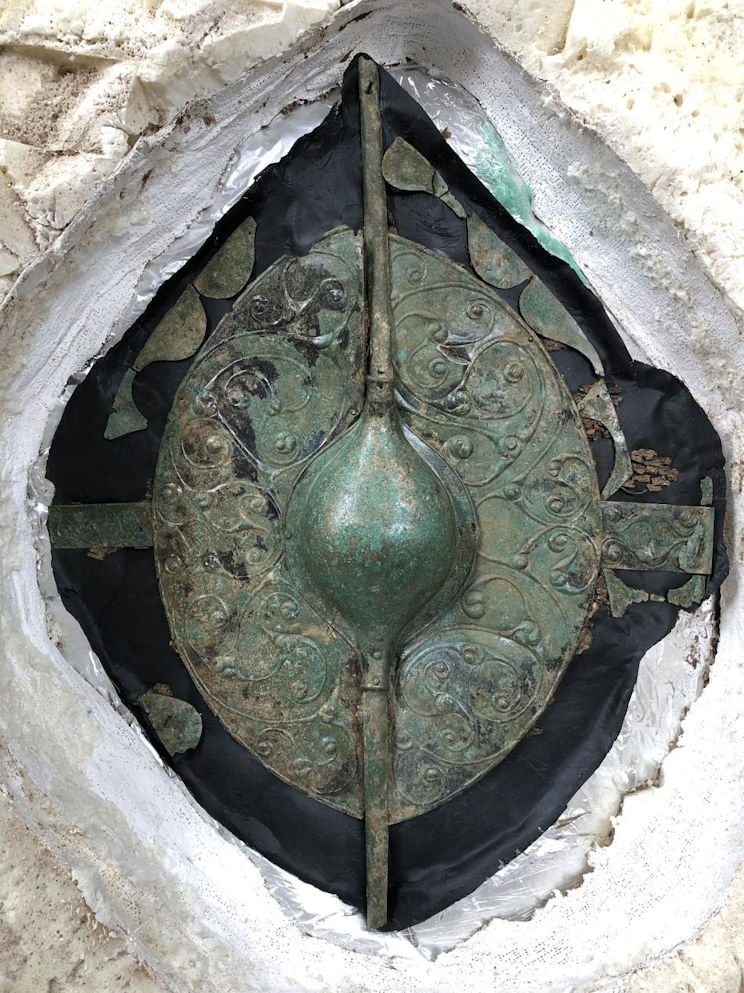
Pocklington Iron Age shield following conservation
Paula Ware, from MAP Archaeological Practice who completed the excavation on behalf of Persimmon Homes, said: “The magnitude and preservation of the Pocklington chariot burial has no British parallel, providing a greater insight into the Iron Age epoch.”
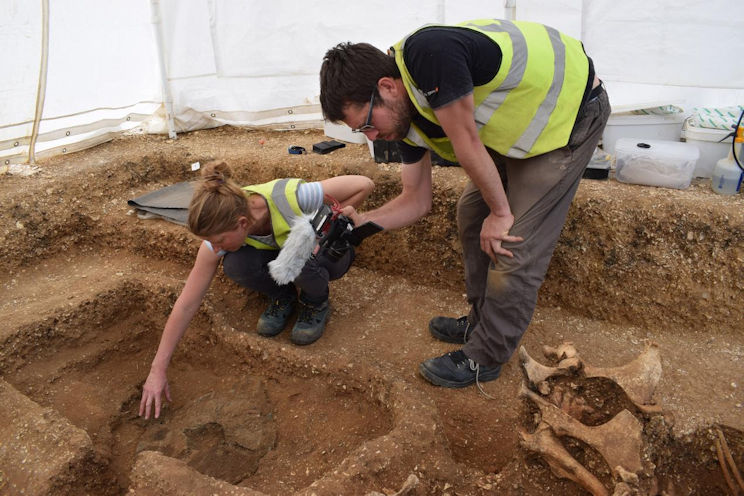
Pocklington Iron Age shield conservation during excavation
The remarkably preserved bronze shield was found laid face down in the cart of an upright chariot, which had been drawn by two ponies. The skeleton of a post 46-year-old male was laid upon the shield and considered to be the shield’s owner. Specialist conservation has revealed a swirling La Tène style architecture, typical of early Celtic art. The repousse design, made by hammering the bronze sheet from the underside, featured evidence of organic forms, such as spiralling mollusc shells creating a three-legged triskele motif. The highly decorative asymmetrical design draws the eye to a central raised boss. “The shield features a scalloped border,” explained Paula. “This previously unknown design feature is not comparable to any other Iron Age finds across Europe, adding to its valuable uniqueness. “The popular belief is that elaborate metal-faced shields were purely ceremonial, reflecting status, but not used in battle. Our investigation challenges this with the evidence of a puncture wound in the shield typical of a sword. Signs of repairs can also be seen, suggesting the shield was not only old but likely to have been well-used,” said Paula.
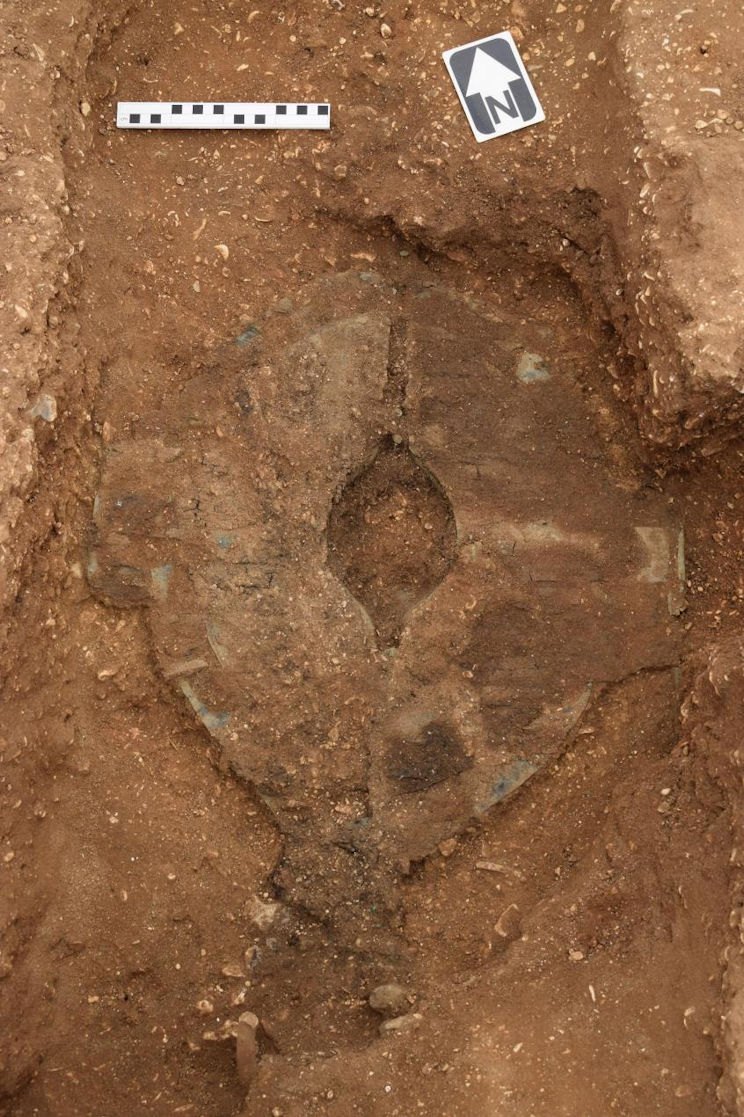
Pocklington Iron Age shield during excavation
The impressive shield formed part of the ‘warrior grave’ discovery revealed at Persimmon Homes Yorkshire’s The Mile development last year. The find featured the upright chariot, two ponies positioned in leaping motion, the ‘warrior’ male and other precious artefacts including a bronze and red glass brooch. The burial was considered a final resting place for a highly regarded member of the community due to being surrounded by the remains of six pigs, believed to act as an offering, and the addition of a further burial of a younger injured male close by. Persimmon Homes Yorkshire, who own the find, are planning to donate the discovery to a museum.
The exact beneficiary is to be confirmed but the housebuilder would like the find to remain in the local area. Scott Waters, director in charge at Persimmon Homes Yorkshire, said: “The excavation at The Mile development is a truly magnificent discovery for British history and we feel this recognition and find should remain in the local area.” The full academic find is expected to be published in the Spring. Excavation is now complete, and construction of the new development, which features a collection two, three, four and five-bedroom homes, is under way, with many customers already moving into their homes.
For further information on the Persimmon Homes The Mile development call 01759 487 671.
Lead Archaeologist Paula Ware is to give an exclusive update on her latest finds in Pocklington at a talk in Pocklington on Wednesday February 19, 2020 entitled "Pocklington just keeps giving"
October 2019 - Pocklington's Heritage Beanfeast a resounding success
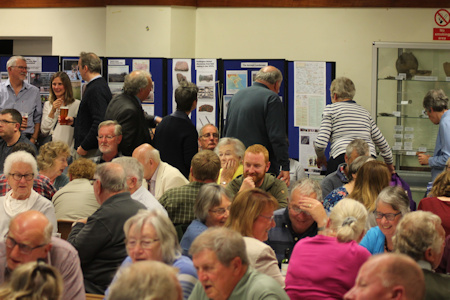 Pocklington's Heritage Beanfeast proved to be a resounding success with 170 people packing into Burnby Hall for an evening of food, drink, music and an archaeology lecture, all with a Celtic twist, plus a pop-up museum of local artefacts. Pocklington's Heritage Beanfeast proved to be a resounding success with 170 people packing into Burnby Hall for an evening of food, drink, music and an archaeology lecture, all with a Celtic twist, plus a pop-up museum of local artefacts.
The event was in aid of efforts to turn Burnby Hall into a community and heritage centre that could house the internationally important archaeology found recently in Pocklington. After a tasty hotpot supper the audience listened intently as Hull University lecturer, Peter Halkon, talked about the Iron Age around Pocklington, before he joined up with his colleagues in Celtic folk group, Shiftipig, to give a first live music set of the night. Paula Ware, lead archaeologist of MAP Archaeological Practice, provided a highlight when she revealed for the first time a picture of the stunning Iron Age shield found in last year's excavation on The Mile, before Shiftipig came back on with more popular Celtic music.
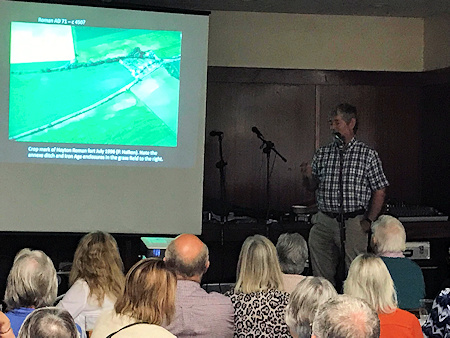 In the background throughout was the pop-up museum of dozens of items generously given and loaned by local collectors. The finds on show displayed the ancient history of Pocklington itself and all the surrounding villages, providing evidence of human activity across the district for over 5,000 years. There were notable examples of all eras from Mesolithic through to Saxon, including the Burnby Lane Iron Age sword and the brooch worn by The Mile charioteer. In the background throughout was the pop-up museum of dozens of items generously given and loaned by local collectors. The finds on show displayed the ancient history of Pocklington itself and all the surrounding villages, providing evidence of human activity across the district for over 5,000 years. There were notable examples of all eras from Mesolithic through to Saxon, including the Burnby Lane Iron Age sword and the brooch worn by The Mile charioteer.
There was praise all round from those attending, with one local commenting:
"The Heritage Beanfeast was a fantastic event. It should be repeated!! The artefacts must be preserved in Pocklington."
September 2019 - The Pop-Up Museum and Beanfeast evening
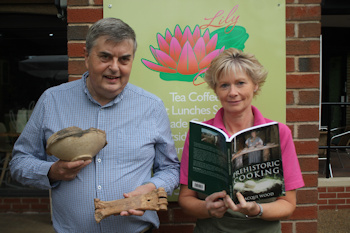 Tickets were all sold out for Pocklington's prehistoric event with a difference at Burnby Hall held at the end of September. Tickets were all sold out for Pocklington's prehistoric event with a difference at Burnby Hall held at the end of September.
The 'Burnby Hall Heritage Beanfeast' featured a pop up museum of artefacts and information from the Neolithic through to the Saxon eras, including items from Pocklington's now famous Burnby Lane Iron Age excavation. And the event organisers were delighted with the response from local collectors and families who had loaned and given items for the event. While Pocklington's recent Iron Age excavations was the focus of the exhibition, there were finds from across the district, including Barmby Moor, Bishop Wilton, Givendale, Kilnwick Percy, Nunburnholme and Hayton.
Local History Group archivist, Andrew Sefton, who coordinated the pop-up museum display, said before the event: "We've had marvellous cooperation from locals who have collected so many historic items from in and around Pocklington. We've been loaned Neolithic axes, Roman pots and coins, Saxon coins and clothing fasteners and, of course, some unique Iron Age pieces from Burnby Lane. We've also showing a few intriguing Medieval items that were too good to leave out.
“We've got limited display space, but the collection should tell the story of the history of Pocklington and the surrounding villages going back 5,000 years.”
There was also a rather different hotpot supper for those attending. Annette Blanchard, who runs the Burnby Hall Gardens catering operation from its Lilypad Cafe, said before the event: "Every year we serve tens of thousands of cups of tea and coffee and thousands of sandwiches and cakes, and try to cater for all tastes; but this is the first time I've been asked for a prehistoric menu! However, now I've looked into it, the ingredients in the Iron Age were remarkably similar to much of what we have today, so I'm sure we will be able to put on a tasty supper for everyone on the night."
Although Burnby Hall Gardens' main season is from mid-March to early November, the gardens and the Lilypad Cafe remain open through the winter months.
Pictured: Andrew Sefton shows a Roman pot and Bronze Age wild ox leg bone found in Pocklington in the 1970s, and Annette Blanchard delves into a prehistoric recipe book as they get ready for the Heritage Beanfeast.
July/Aug 2019 - The consultants Jura are working on the Feasibility Study
Jura Consultants are conducting the options appraisal on behalf of the Stewarts Burnby Hall Gardens and Museum Trust and their report will be ready by the end of September. For the first step towards the launch of any bid is the need to raise funds to help with the start of the project. An evening of food, drink, music and history all with an Iron Age twist at Pocklington's Burnby Hall & Gardens has been arranged on Friday 27th September 2019 6pm - 11pm.
The Burnby Hall Heritage Beanfeast.
Entertainment Includes:
- Introductory address by Dr Peter Halkon, Senior Lecturer in Archaeology at Hull University
- Traditional Celtic Supper (vegetarian option available)
- Served 6.30pm - 7.30 pm_Live Music from Celtic and Folk band Shiftipig
- Pop-up museum of Local Iron Age, Roman & Saxon Artifacts
- Local History Exhibition & information, raffle, cash bar
Tickets £15 + online fees, or from the Burnby Hall Visitor centre (no extra fees).
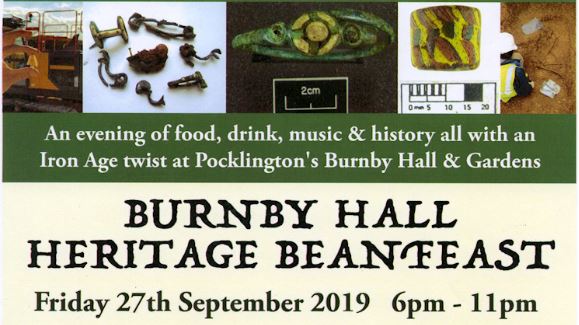
June 2019 - Very good turnout for consultation event
Over 200 people attended the public consultation day at Pocklington's Burnby Hall on Wednesday (5 June) to view and comment on the on-going options appraisal study into the hall's future. And if anyone was unable to attend on the day but still wants to comment, there is a last chance to do so before the end of this week as the consultation boards will be in the marquee within Burnby Hall Gardens until Thursday 13th June.
The consultation event was organised by Jura Consultants who are conducting the five-month options appraisal on behalf of the Stewarts Burnby Hall Gardens and Museum Trust which operates the adjacent Burnby Hall Gardens and Museum. The outcome of the study will inform final decisions on East Riding of Yorkshire Council's offer to make the building available to the Gardens' Trust through a community asset transfer arrangement.
The attendees included a wide range of interested parties, from schoolchildren to pensioners; including town councillors; East Riding council officials; history enthusiasts and experts; visitors, staff and trustees from the gardens; and members of organisations that currently hire and use the community hall facilities at Burnby Hall.
The day generated plenty of lively discussion, opinion and ideas about the future, and Jura's Rae Morton commented:
"We were absolutely delighted with the response to the consultation event on Wednesday – one of our consultancy’s busiest ever community events! It is clear that Burnby Hall is a much-loved asset and there is no shortage of enthusiasm or ideas regarding its future use. We will be taking all views on board as we move forward to the next phase of the study which will involve identifying and assessing a short-list of potential options for the building. On behalf of our study team I would like to thank everybody who attended."
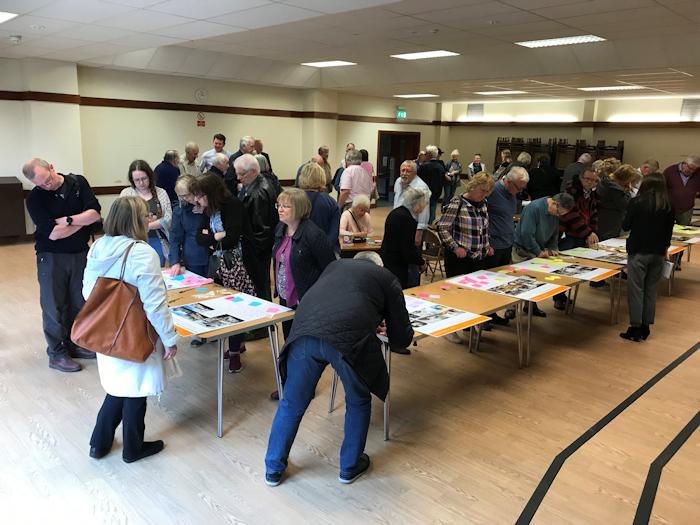
May 2019 - Have Your Say on the Future of Burnby Hall
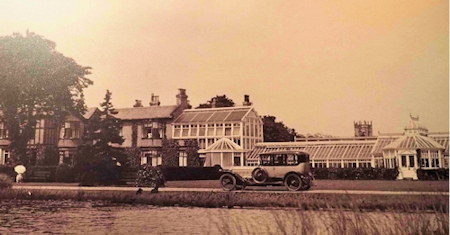 What would you like to see Pocklington’s Burnby Hall used for in the future? What would you like to see Pocklington’s Burnby Hall used for in the future?
What does Pocklington need?
The public is being invited to come along to a drop-in at Burnby Hall on Wednesday 5 June to share their views and hear how the current Options Appraisal into the hall is progressing.
A study team, led by heritage specialists Jura Consultants and including conservation architects LDN Architects and interpretive planners Studioarc, is conducting a five month options appraisal in a bid to identify a viable way forward for Burnby Hall. The team is assessing a wide range of potential use options for the property, with one example being a new heritage centre and museum to display recent archaeological finds. There are many other potential options and this event is an opportunity for the public to have its say and to shape which options are taken forward for assessment by the study team. The study has been commissioned by the Stewarts Burnby Hall Gardens and Museum Trust, the charitable organisation which operates the adjacent Burnby Hall Gardens and Museum. The opportunity has arisen for the Trust to acquire Burnby Hall from East Riding of Yorkshire Council through a community asset transfer, thereby reuniting the historic mansion house with its gardens. The outcome of this study will help to inform the Trust’s decision. Residents from Pocklington and surrounding villages, including families; plus local businesses, visitors and anyone with an interest in the future of Burnby Hall, are all invited.
Rae Morton, from Jura Consultants, said: “We are looking for local people to have their say, and hope anyone with an interest in the future of the hall will pop down and talk to us during the afternoon or evening.”
Come along to the Community Hall at Burnby Hall (The Balk, Pocklington, YO42 2QF) on Wednesday 5 June between 2.30pm and 7.30pm to meet the study team, hear about how the study is progressing and share your views. This is an informal drop-in event open to all. Please feel free to drop by for as little or as long as you like. Free parking is available at the Gardens and Museum car park and, after 5pm, at the Burnby Hall car park.
The study team looks forward to meeting you!
April 2019 - Feasibility Study Begins
 |
| Pictured on the steps of Burnby Hall are (l to r) Paul Jardine, Rae Morton and Katrina Gargett from Jura Consultants, Mairead O'Rourke from Culture Runner and Sarah Oswald from The Authentic Spark. |
Two of the country's leading heritage consultants will be spending the next few months undertaking a detailed study of Burnby Hall and the plans to turn it into a heritage and community centre for Pocklington and district. East Riding of Yorkshire Council's community asset transfer offer would reunite Burnby Hall with the adjacent Burnby Hall Gardens and see ownership of the building taken on by the charitable trust that runs the gardens. However, East Riding's offer is conditional on the plan being financially robust and sustainable. Support from the National Lottery Heritage Fund has enabled the study to examine if and how the vision for the hall to become a community and visitor facility that would also house recent local archaeological finds can be turned into a reality.
After a competitive tendering and interview process, the Burnby Hall Gardens & Museum trust has chosen Jura Consultants to lead the feasibility study; while a governance review into how the trust would best manage the whole site will be undertaken by museum governance and strategy specialists, Culture Runner. Sarah Oswald, from The Authentic Spark, will also support the trust as its heritage mentor. Burnby Hall Gardens & Museum trust chairman, Paul Lee, announced the appointments, saying: "We were very impressed by the presentations and track records of both Jura Consultants and Culture Runner. Their proposals fitted perfectly with our vision to turn Burnby Hall into a top-class community and heritage facility." Jura Consultants have worked on a series of major heritage and cultural projects throughout the UK, including leading museums and art galleries, historic buildings and visitor attractions. In Pocklington they will head a multi-disciplinary team to conduct an options appraisal and business plan for the restoration and re-use of Burnby Hall. The study team includes conservation specialists and architects; exhibition designers, surveyors and consulting engineers to consider a range of potential use options for Burnby Hall; balancing the need for funding, restoration and operational sustainability that is complementary with existing operations at Burnby Hall Gardens. Jura's brief will also include consultation in the next few months with stakeholders, interested parties and the local community; and details of community participation and consultation will be announced shortly. The feasibility study and report is scheduled to be completed by mid-September, with the aim that it will facilitate the next step of grant and funding applications to support the hall plan.
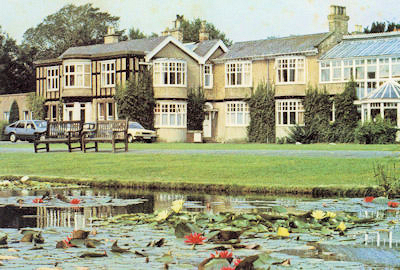 Jan 2019 - Exciting News! Jan 2019 - Exciting News!
Pocklington Heritage Partnership and Burnby Hall Gardens & Stewarts Museum Trust has been granted £53,500 by the National Lottery Heritage Fund to support a feasibility study into their vision to reunite Pocklington’s Burnby Hall building with the adjoining garden and visitor facilities and create a new Museum and Heritage Centre for the town.
The Gardens Trust first approached East Riding of Yorkshire Council in 2017 to discuss possibilities of taking over Burnby Hall and developing it into a community and heritage centre alongside the famous gardens.
 Pocklington Heritage Partnership and the Stewarts Burnby Hall Gardens and Museum Trust are working together to create a facility that could showcase the recent archaeological finds in Pocklington. Pocklington Heritage Partnership and the Stewarts Burnby Hall Gardens and Museum Trust are working together to create a facility that could showcase the recent archaeological finds in Pocklington.
More news can be found here.
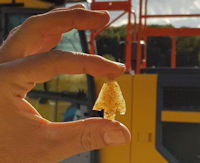 2018 has been a memorable year for Pocklington Archaeology. Leading on from the 'archaeology dig of international importance' found at the David Wilson Homes Burnby Lane site, has been another amazing find on the other side of town at the Persimmon Homes Mile building site. An Anglo-Saxon village described as one of the best preserved and with many similarities to the West Heslerton Anglo Saxon site in North Yorkshire, and an Iron Age chariot burial of unique significance. Phil Gilbank has written an article to sumarise an outstanding year and includes the goals of the newly formed "Pocklington Heritage Partnership". He outlines the hopes and ambition of our town to create a Museum and Heritage Centre to keep them and preserve them in the place our ancient ancesters wished them to rest. A growing town the size of Pocklington deserves a facility like this for our community. It will allow students to study these artifacts for many years to come and spawn many research projects which may re-write our local history. We also wish to preserve the wider heritage of the town, local villages and the Wolds. Pocklington has always been known as the 'Gateway to the Wolds' and our church as "Cathedral of the Wolds". 2018 has been a memorable year for Pocklington Archaeology. Leading on from the 'archaeology dig of international importance' found at the David Wilson Homes Burnby Lane site, has been another amazing find on the other side of town at the Persimmon Homes Mile building site. An Anglo-Saxon village described as one of the best preserved and with many similarities to the West Heslerton Anglo Saxon site in North Yorkshire, and an Iron Age chariot burial of unique significance. Phil Gilbank has written an article to sumarise an outstanding year and includes the goals of the newly formed "Pocklington Heritage Partnership". He outlines the hopes and ambition of our town to create a Museum and Heritage Centre to keep them and preserve them in the place our ancient ancesters wished them to rest. A growing town the size of Pocklington deserves a facility like this for our community. It will allow students to study these artifacts for many years to come and spawn many research projects which may re-write our local history. We also wish to preserve the wider heritage of the town, local villages and the Wolds. Pocklington has always been known as the 'Gateway to the Wolds' and our church as "Cathedral of the Wolds".
** Sign our Petition to create a museum in Pocklington to house and display the finds from Pocklington's rich archaeology**
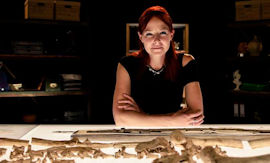 Previously on BBC iPlayer, Digging for Britain a BBC Four Iron Age Special was broadcast on the 19th December, 2018 and Prof. Alice Roberts featured Pocklington's amazing finds in a one hour special. The BBC publicity for the programme said: Previously on BBC iPlayer, Digging for Britain a BBC Four Iron Age Special was broadcast on the 19th December, 2018 and Prof. Alice Roberts featured Pocklington's amazing finds in a one hour special. The BBC publicity for the programme said:
"Alice Roberts follows the excavation of Iron Age Britain’s most spectacular grave. A team of archaeologists in East Yorkshire have uncovered the remains of only the third upright chariot burial ever found in Britain, and the only chariot burial ever found in this country with the chariot harnessed to two standing ponies. This sensational find is the lead dig for the Digging for Britain Iron Age special."
Alice Roberts described it as one of the most exciting Iron Age burials ever found in Britain.
"The most spectacular iron age find I have seen in Iron Age Britain" - Dr Melanie Giles
The York Press announced the programme. 'Unparalleled' Iron Age warrior grave uncovered near Pocklington
The Pocklington Post "Iron Age chariot burial found in East Yorkshire with horses 'leaping out of the grave'"
Chariot Burial found at The Mile building site.
The Yorkshire Post have reported that an Iron Age Chariot with horses has been found by the archaeologists working on the Persimmon Homes site on the Mile. This follows the discovery of another Chariot in the Burnby Lane excavation last year and firmly places Pocklington as an important Iron Age settlement and Cemetery site in East Yorkshire
on a par with other important sites such as Arras. This helps Pocklington in it's quest for establishing a new Heritage Centre Museum in the town and if you have not already done so, please sign our petition to support the project.
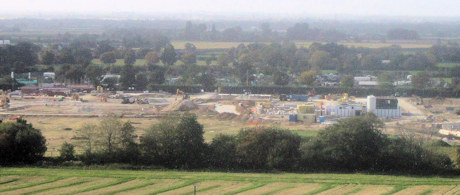
|

